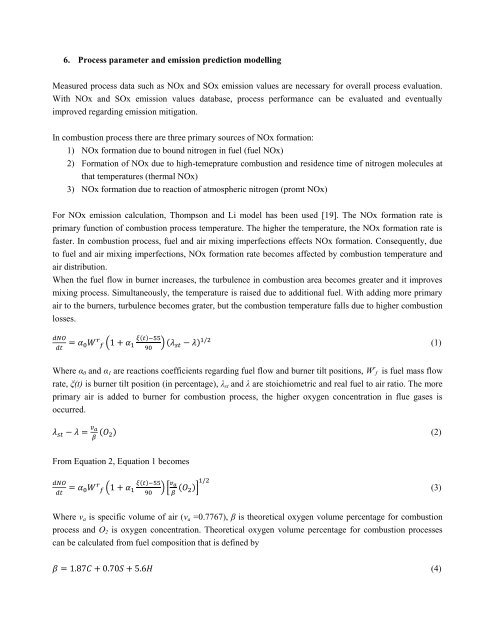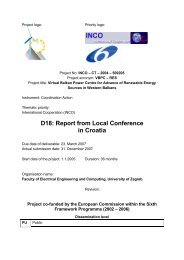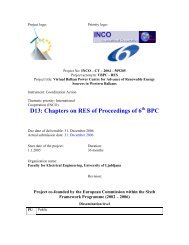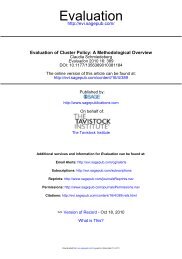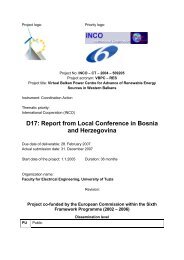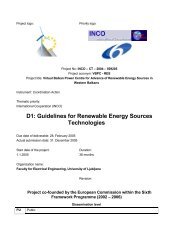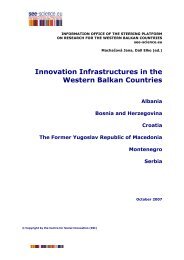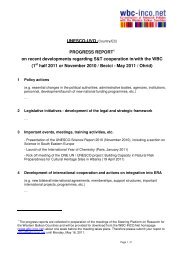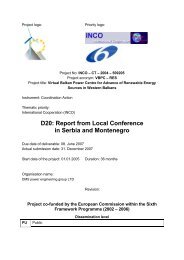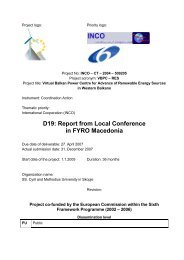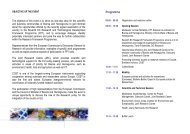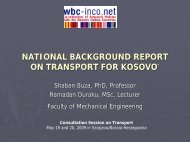Improvement of Environmental Aspects of Thermal Power Plant ...
Improvement of Environmental Aspects of Thermal Power Plant ...
Improvement of Environmental Aspects of Thermal Power Plant ...
Create successful ePaper yourself
Turn your PDF publications into a flip-book with our unique Google optimized e-Paper software.
6. Process parameter and emission prediction modelling<br />
Measured process data such as NOx and SOx emission values are necessary for overall process evaluation.<br />
With NOx and SOx emission values database, process performance can be evaluated and eventually<br />
improved regarding emission mitigation.<br />
In combustion process there are three primary sources <strong>of</strong> NOx formation:<br />
1) NOx formation due to bound nitrogen in fuel (fuel NOx)<br />
2) Formation <strong>of</strong> NOx due to high-temeprature combustion and residence time <strong>of</strong> nitrogen molecules at<br />
that temperatures (thermal NOx)<br />
3) NOx formation due to reaction <strong>of</strong> atmospheric nitrogen (promt NOx)<br />
For NOx emission calculation, Thompson and Li model has been used [19]. The NOx formation rate is<br />
primary function <strong>of</strong> combustion process temperature. The higher the temperature, the NOx formation rate is<br />
faster. In combustion process, fuel and air mixing imperfections effects NOx formation. Consequently, due<br />
to fuel and air mixing imperfections, NOx formation rate becomes affected by combustion temperature and<br />
air distribution.<br />
When the fuel flow in burner increases, the turbulence in combustion area becomes greater and it improves<br />
mixing process. Simultaneously, the temperature is raised due to additional fuel. With adding more primary<br />
air to the burners, turbulence becomes grater, but the combustion temperature falls due to higher combustion<br />
losses.<br />
(<br />
( )<br />
) ( ) (1)<br />
Where α0 and α1 are reactions coefficients regarding fuel flow and burner tilt positions, W r f is fuel mass flow<br />
rate, ξ(t) is burner tilt position (in percentage), λst and λ are stoichiometric and real fuel to air ratio. The more<br />
primary air is added to burner for combustion process, the higher oxygen concentration in flue gases is<br />
occurred.<br />
( ) (2)<br />
From Equation 2, Equation 1 becomes<br />
(<br />
( )<br />
) *<br />
( )+<br />
Where va is specific volume <strong>of</strong> air (va =0.7767), β is theoretical oxygen volume percentage for combustion<br />
process and O2 is oxygen concentration. Theoretical oxygen volume percentage for combustion processes<br />
can be calculated from fuel composition that is defined by<br />
(3)<br />
(4)


